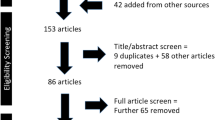Abstract
Objective of the study
to quantify sales of authorized natural remedies (ANRs) in Norway, to compare the Norwegian authorization scheme with similar schemes in Sweden, Denmark and the EU, and to identify factors influencing the number of marketed ANRs.
Method
descriptive statistics are used to present sales of ANRs in Norway. The ANRs are classified by indication group and assigned a recommended daily dose (RDD) according to the posology section in the Summary of Product Characteristics (SPC). Document analysis of regulation and general information concerning natural remedies is used to compare the authorization schemes for ANRs in Scandinavia and for traditional herbal medicinal products (THMs) in the EU. Four cases of herbs are described to illustrate the consequences of this regulation and identify possible influencing factors.
Main outcome measure
sales, in terms of both mean consumer prices and number of RDDs, and the factors found to influence the number of marketed ANRs.
Results
total sales of ANRs in Norway in 2003 were € 1.5 per capita (3% of the food supplement market), or 5.5 RDD/1,000/day, and the sales have tended to decline. Norway has very few ANRs compared with Sweden and Denmark. Changes in Norwegian ANR regulation in 2004 have harmonized application requirements in Scandinavia, but results have yet to be seen. THMs are subject to the same quality requirements as ANRs, and will replace the ANRs over the next 7 years. Several factors have influenced the manufacturers’ application incentive, e.g., application costs, differentiated VAT rates, consumer knowledge and surveillance by health authorities.
Conclusion
sales of authorized compared to unauthorized natural remedies in Norway are very low and the ANRs are in a weak position compared to Denmark and Sweden. Surveillance by health authorities and increased consumer knowledge of ANRs is probably more stimulating with respect to application incentive than lower application costs. Introducing THMs will hopefully increase the number of quality-controlled products on the Scandinavian market.
Similar content being viewed by others
References
Retningslinjer for godkjenning av naturlegemidler [Guidelines on authorization of natural remedies] Oslo: Norwegian Medicines Agency; 1998
Helboe P, Bager S. Vejledning om markedsføringstilladelse til naturlægemidler [Guidelines on authorization of herbal medicinal products]. Copenhagen: Danish Medicines Agency; 2001
Strandberg K, Sjøberg B. Guidelines on authorization to place natural remedies on the market. Stockholm: Medical Products Agency, LVFS; 1995:1101–5225
Proposition No.55 to the Odelsting (2001–2002) concerning changes in the Act relating to medicines etc. and the Act relating to medicinal equipment. Oslo, Ministry of Health and Care Services; 2002 [in Norwegian]
Directive 2004/24/EC of the European Parliament and of the Council of 31 March 2004 amending as regards traditional herbal medicinal products, Directive 2001/83/EC on the Community code relating to medicinal products for human use. Official J Eur Union. 2004;47(L 136):85–90
De Smet PAGM. Health risks of herbal remedies: an update. Clin Pharmacol Ther 2004;76(1):1–17
Hanssen B, Grimsgaard S, Launsø L, Fønnebø V, Falkenberg T, Rasmussen NK. Use of complementary and alternative medicine in the Scandinavian countries. Scand J Prim Health Care 2005;23(1):57–62
Euro foreign exchange reference rates. The European Central Bank [homepage on the Internet] 2005 [cited 15.03.05]; Available from: http://www.ecb.int/stats/exchange/eurofxref/html/index.en.html
Guidelines for ATC classification and DDD assignment. 6 ed. Oslo: WHO Collaborating Centre for Drug Statistics Methodology; 2003.ISBN 82–8082025–6
Directive 2001/83/EC of the European Parliament and of the Council of 6 November 2001 on the Commumity code relating to medicinal products for human use. Official J Eur Union. 2001;44(L 311):67–127
Fines J. Reading historical documents: a manual for students. Oxford: Basil Blackwell Limited; 1988. ISBN 0-631-90167-1
Färnlöf Å, Mattsson KR. Marknadsfakta–om hälsokost, naturläkemedel, vitaminer, mineraler och naturkosmetik [Marketing figures–health food, authorized natural remedies, vitamins, minerals and natural cosmetics] The Health Food Council [homepage on the Internet] 2005 [cited 20.05.05]; Available from: http://www.halsokostradet.se/default.aspx?SelSidId=10006
European Commission–Enterprise Directorate-General–Pharmaceuticals Unit. The Rules Governing Medicinal Products in the European Union Volum 2-Pharmaceutical Legislation: Notice to Applicants. Eudralex [homepage on the Internet] 2005 [cited 15.06.05]; Available from: http://www.pharmacos.eudra.org/F2/eudralex/vol-2/home.htm
Forskrift om legemidler [Regulation regarding medicines] FOR 1999–12–22 Nr 1559
Syse-utvalget [Report from the syse-committee]. Oslo: Ministry of Health and Care Services; 2003
Wesenberg GR. Generell dispensasjon fra Legemiddellovens § 20 [General dispensation from The Act relating to medicines, article 20]. Norwegian Medicines Agency: Circular letter No 10. 2001
Madsen KH. Stigende problemer med markedsføringen af sundhedsprodukter [Increasing problems with the marketing of health food products] Danish Medicines Agency [press release] 9 May. 2005
Dragland S. Rosenrot,-botanikk, innholdsstoff, dyrkning og bruk, en litteraturoversikt. [Arctic root,-botany, contents, cultivation and use, a literature review] vol 09. Planteforsk Grønn forskning. 2001;09 p 29
Nilsen MG. Kunnskap og rådgivning om urtemedisin til gravide og ammende blant farmasøyter, leger og helsekostpersonale. [Knowledge and counselling regarding herbal medicine to pregnant and breastfeeding women, among pharmacists, physicians and health shop personnel] [Master’s thesis]. Oslo: University of Oslo; 2003
Acknowledgements
We wish to thank the Norwegian wholesalers of authorized natural remedies and Farmastat AS for providing sales data. We are also grateful for the information provided by NoMA, MPA and DKMA. The article is based on a Master’s thesis completed at the Institute of Pharmacy, University of Tromsø, Norway, in 2004. A grant was received from The Norwegian Pharmaceutical Society.
Author information
Authors and Affiliations
Corresponding author
Rights and permissions
About this article
Cite this article
Waaseth, M., Eggen, A. & Grimsgaard, S. Natural remedies in Scandinavia—authorization and sales. Pharm World Sci 29, 137–145 (2007). https://doi.org/10.1007/s11096-006-9033-7
Received:
Accepted:
Published:
Issue Date:
DOI: https://doi.org/10.1007/s11096-006-9033-7




